Photos: Fearsome Ancient Otter Was As Large As a Wolf
Fearsome ancient otter

More than 6 million years ago, an otter the size of a wolf swam around the swamps of ancient southwestern China. At 110 lbs. (50 kilograms) the otter was a behemoth, about twice as heavy as the South American giant river otter (Pteronura brasiliensis), the largest otter living today. [Read the full story on the fearsome otter.]
Swampy home

The wolf-size otter lived in a swampy, shallow lake filled with aquatic animals, such as clams, as well as plants, according to other late Miocene-epoch fossils discovered nearby. The Miocene lasted from about 23 million to 5 million years ago.
Otter map

Researchers found the otter in Zhaotong Basin, located in China's Yunnan province. Previously, researchers had discovered fossilized teeth of another large otter in Thailand's Mae Moh Basin that dates to the middle Miocene and one in China's Yushe Basin that dates to the Pliocene epoch (about 5 million to 2.5 million years ago).
The quarry

Researchers went to Shuitangba quarry in search of something very different from an otter. In 2009, the field team discovered a skull of a juvenile hominoid skull known as Lufengpithecus, said study lead researcher Xiaoming Wang, a curator of vertebrate paleontology at the Natural History Museum of Los Angeles County in California.
"After that, we got funding to go back in 2010 because of the Lufengpithecus skull," Wang said. Instead, they found the wolf-size otter.
Skull size
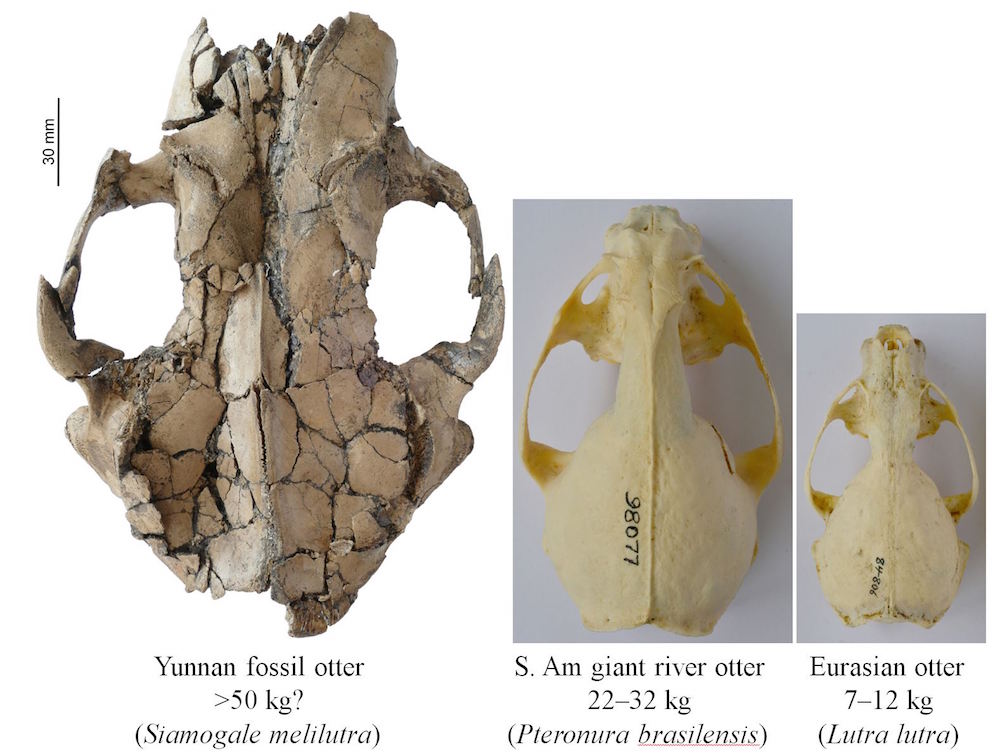
The ancient otter's skull is substantially larger than those of the modern-day South American giant river otter and the Eurasian otter.
Cranial view
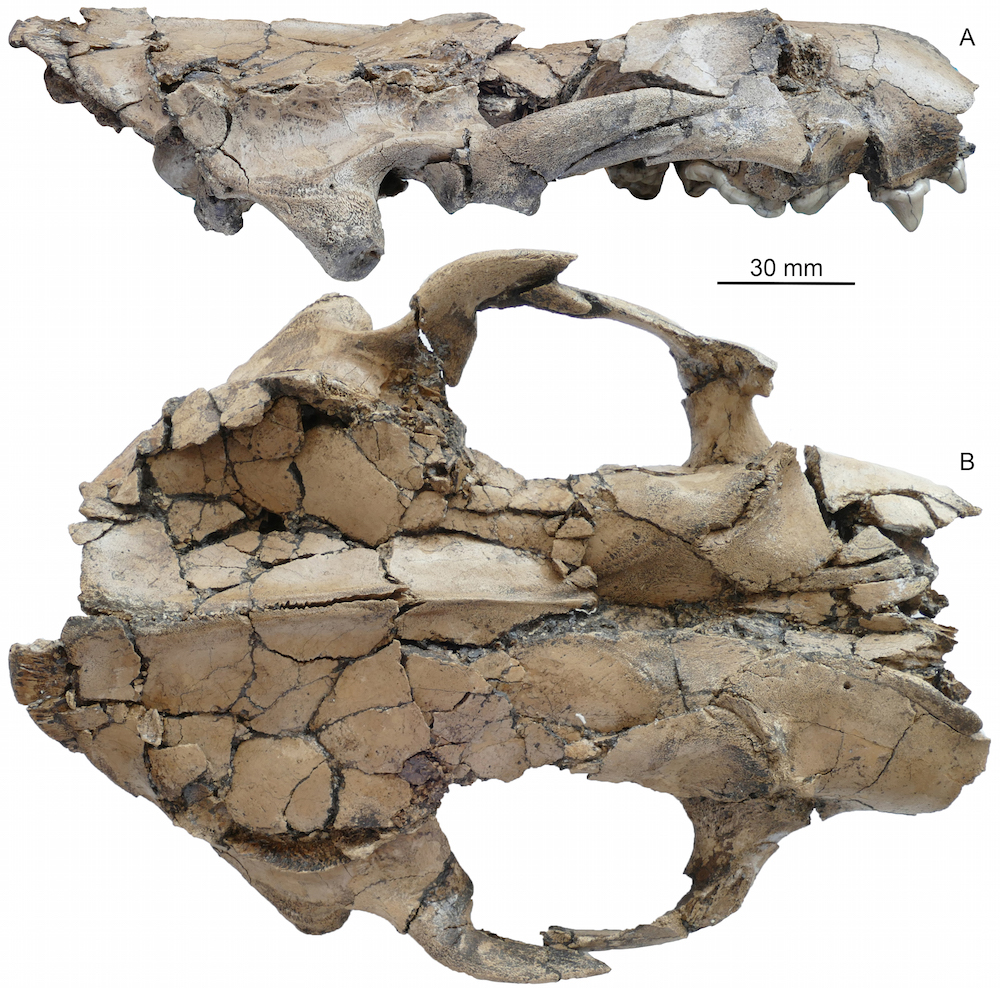
A view of the skull from the right side and the top.
Upper chompers
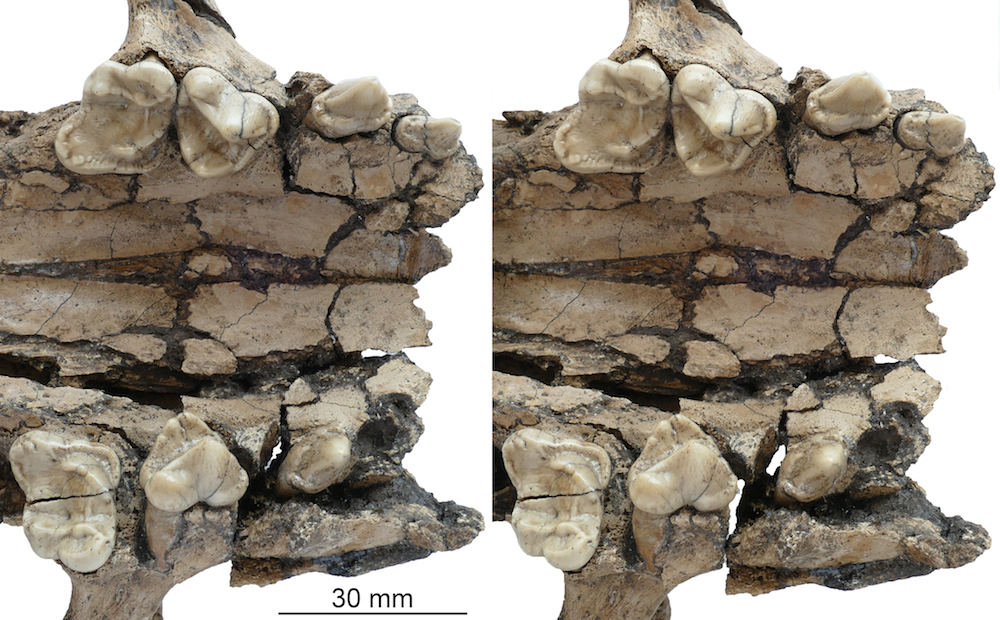
The wolf-size otter's upper teeth. Its large, rounded cheek teeth likely helped it crush large shellfish and freshwater mollusks, both of which are found in the Shuitangba quarry.
Get the world’s most fascinating discoveries delivered straight to your inbox.
Lower teeth
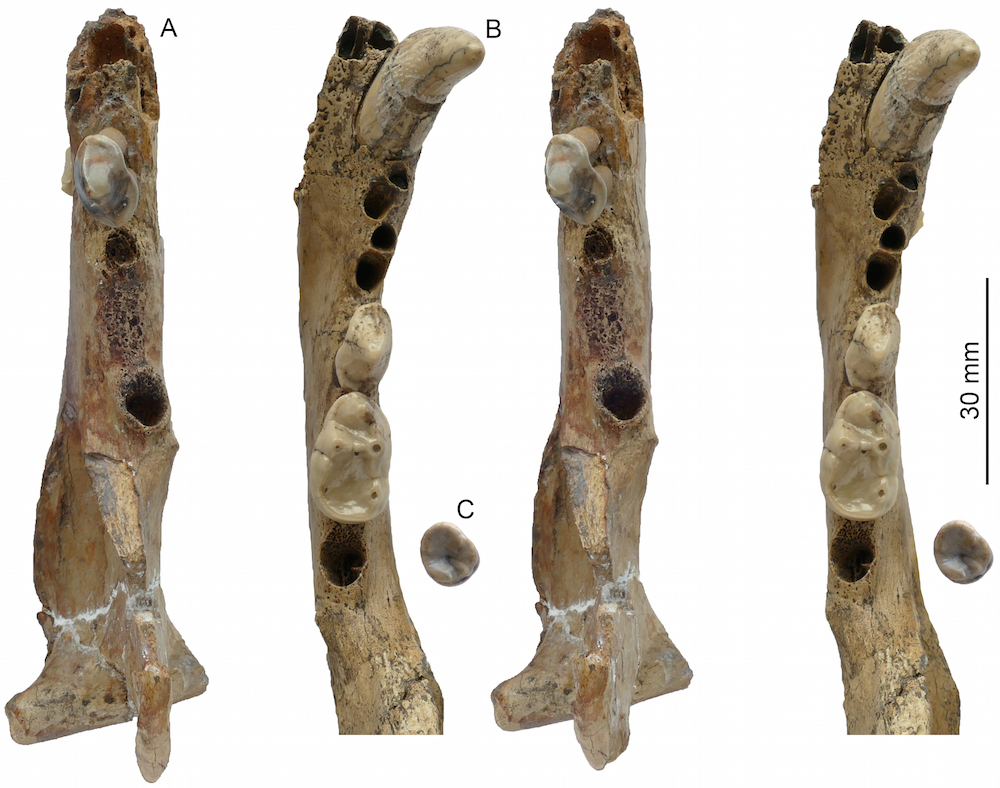
The otter's lower teeth.
Big teeth
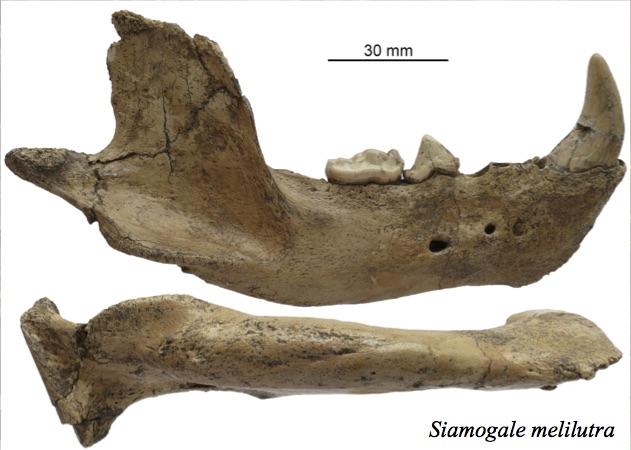
The skull is like that of an otter, but the teeth are like those of a badger, the researchers said. Thus, they named it Siamogale melilutra. The species name honors both animals; in Latin, "meles" means badger, and "lutra" translates to otter, Wang said.
This isn't especially surprising, as the modern otter is in the family Mustelidae, which includes weasels, badgers, ferrets and martens.
Rainbow scan
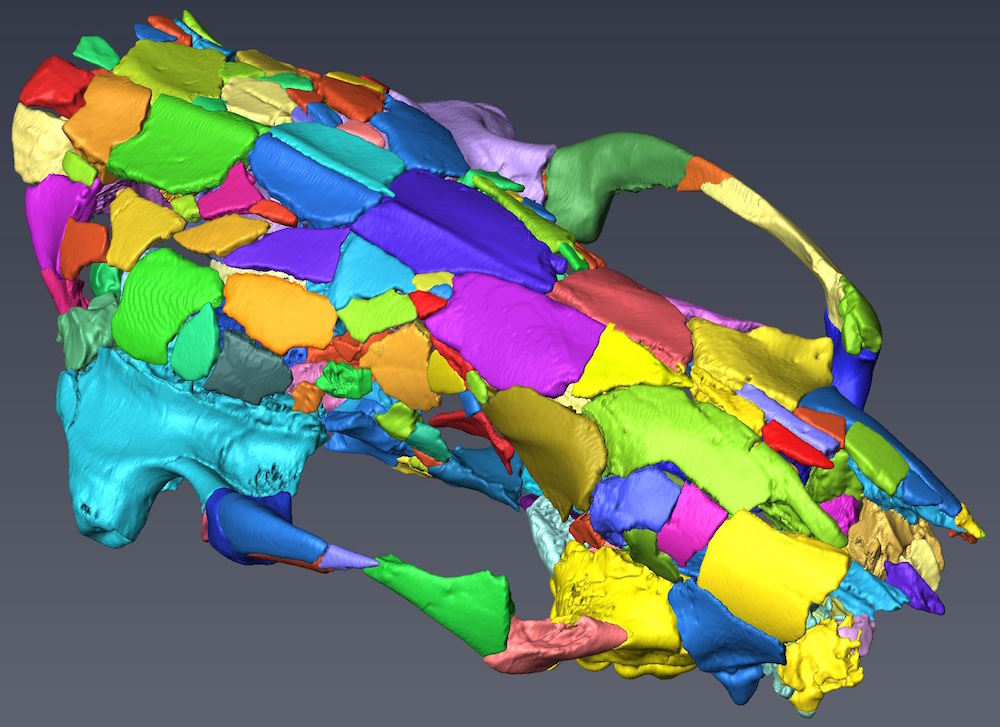
Because the skull was flattened like a pancake, researchers did a computed tomography (CT) scan of the fossil. Then, study co-author Stuart White, a professor emeritus of maxillofacial radiology at the University of California, Los Angeles, digitally reconstructed the skull into a three-dimensional shape.
Each color in this digital scan represents an individual fragment.
Black and white
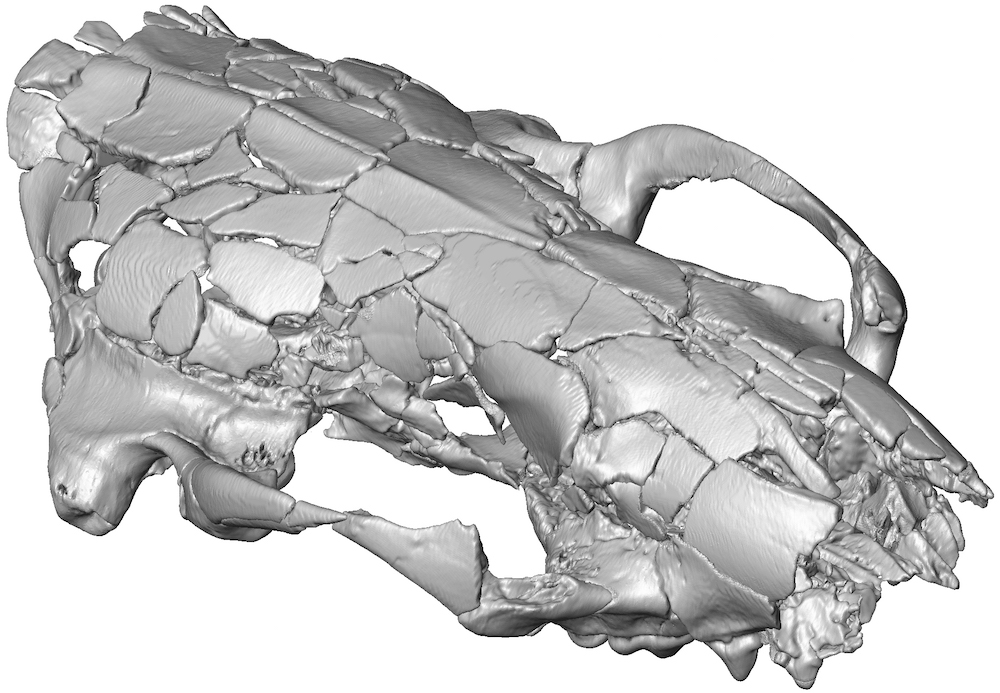
The final CT scan image, colored in gray. [Read the full story on the fearsome otter.]

Laura is the managing editor at Live Science. She also runs the archaeology section and the Life's Little Mysteries series. Her work has appeared in The New York Times, Scholastic, Popular Science and Spectrum, a site on autism research. She has won multiple awards from the Society of Professional Journalists and the Washington Newspaper Publishers Association for her reporting at a weekly newspaper near Seattle. Laura holds a bachelor's degree in English literature and psychology from Washington University in St. Louis and a master's degree in science writing from NYU.


